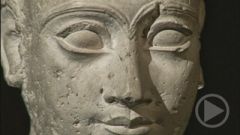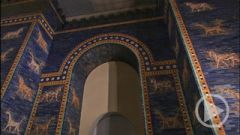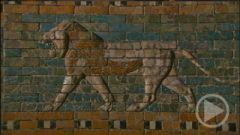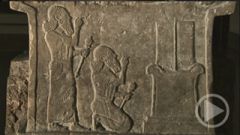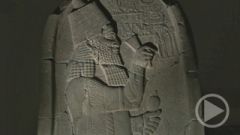- Home
- »
- Germany
- »
- Berlin
- »
- Museum Island
- »
- Pergamon Museum
- »
- The Museum of the Ancient Near East
- »
- The Pergamon Museum - Inside an Assyrian Palace
Inside an Assyrian Palace
Inside an Assyrian Palace
Five hundred years after Tukulti Ninurta, the Assyrian Empire stretched to the Mediterranean Sea. The sacred city of Ashur with its huge temples remained the most important religious site. But the capital was moved farther north, first to Nimrud and then, 100 years later, to Nineveh.
The frightening colossi of a winged figure called a shedu that you see guarding the entrance to the next room are also from Nimrud. Here, Walter Andrae attempted to reconstruct a typical hall in an Assyrian palace. It is made up of various elements from the second and first millennia B.C. and is probably quite a reliable historical representation.
With one exception: the Assyrian palaces had no windows. Daylight was admitted only through the entrances. So the rooms must have been rather gloomy, bathed in the flickering light of torches and oil lamps. Every other detail of Berlin's palace hall, however, is based on evidence from archaeological finds or ancient descriptions. That includes the wooden ceiling with its gilded panels, the coloured walls with decorative friezes and, above all, the reliefs on the walls.
In order to impress both subordinates and envoys, they were depictions of the kings performing feats of heroism or, as in this one, communing with the gods. They were once colourfully painted - you can see remnants of the paint on the soles of the king's shoes. When the archaeologists first excavated the stone slabs, many of the colours were still visible. But as soon as they were exposed to daylight, the colours quickly faded.


